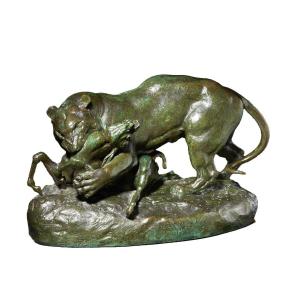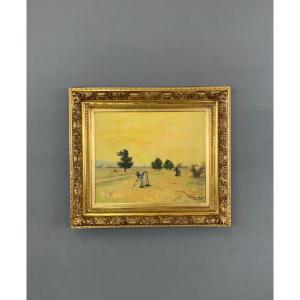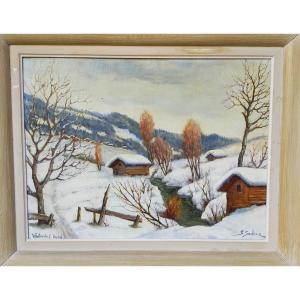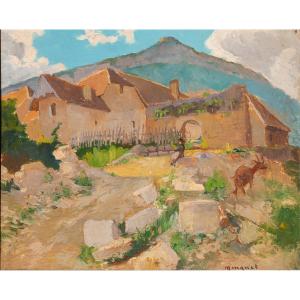The overall mood is tranquil and reflective. The cool color tones and the gentle flow of the river contribute to a sense of peace and serenity. There is also a hint of mystery due to the subdued lighting and the somewhat hidden parts of the scene.
Chabanian's work shows influences of Impressionism, particularly in the way he captures light and atmosphere. The focus on natural scenery and the use of light to convey mood are hallmark traits of this movement.
This painting by Arsen(e) Chabanian is a beautiful example of landscape art that effectively uses color, light, and composition to create a peaceful and engaging scene.)
Arsene Chabanian (1864-1949
Arsene Chabanian, a distinguished seascape artist in both Armenian and European art, was born in 1864 in Karin (Erzurum, Western Armenia), then part of the Ottoman Empire. His early education was at the Murad Raphaelian College of Venice, which provided a solid foundation for his future artistic endeavors. After his studies in Venice, Chabanian worked in Batumi, a coastal city by the Black Sea. In 1890, he traveled to Theodosia to meet the legendary seascape artist Ivan Aivazovsky, seeking his advice and mentorship. This meeting had a profound impact on his development as a seascape painter.
Chabanian then moved to Paris to further his education at the Académie Julian. Here, he studied under prominent masters such as Gustave Moreau, Jean-Paul Laurens, and Benjamin Constant. These experiences enriched his artistic style, blending academic rigor with the vibrant Parisian art scene.
In 1891, a young Chabanian presented his painting "The Liner Nakhimov in the Port of Batumi" to the Russian Grand Duke Georgiy Alexandrovich, who highly appreciated the work and expressed his special gratitude. This early recognition set the stage for his future success.
In 1894, Chabanian exhibited his works at the Salon of French Artists, marking his entry into the competitive Parisian art world. Six years later, in 1900, he participated in the Paris World Exhibition, showcasing a seascape that garnered significant attention.
Chabanian was a pioneer in the technique of colored engraving, founding the “Union of Marine Painters of Paris” and the “Company of Colored Engraving”. He was not only celebrated for his marine paintings but also excelled in pastels, creating exquisite landscapes and still-lives. In 1926, the renowned Georges Petit Gallery in Paris organized a personal exhibition of Chabanian's works, further cementing his reputation as a leading seascape artist.
Chabanian spent his long and fruitful life across Italy, France, Belgium, and England, continually learning and refining his craft under various masters. Throughout his career, he produced over one thousand works. Despite his extensive output, only a few of his works remain in Armenia, with some housed in the National Gallery of Armenia, the Echmiadzin Holy See Museum, and private collections.
Arsene Chabanian's legacy as one of the foremost seascape artists is enduring. His innovative techniques and masterful use of light and color have left an indelible mark on both Armenian and European art. His life's work, characterized by a deep appreciation for the natural world and a commitment to artistic excellence, continues to inspire and captivate art enthusiasts around the world.













































 Le Magazine de PROANTIC
Le Magazine de PROANTIC TRÉSORS Magazine
TRÉSORS Magazine Rivista Artiquariato
Rivista Artiquariato